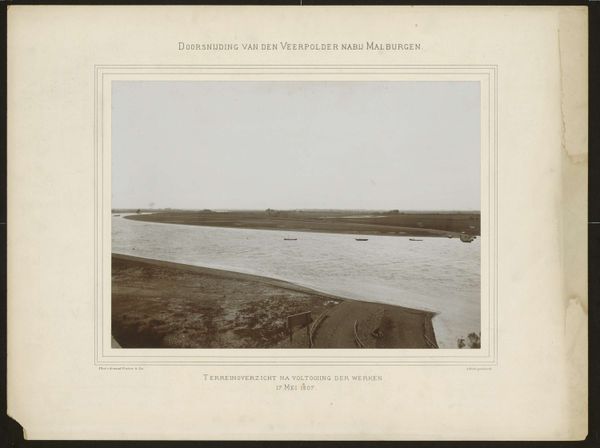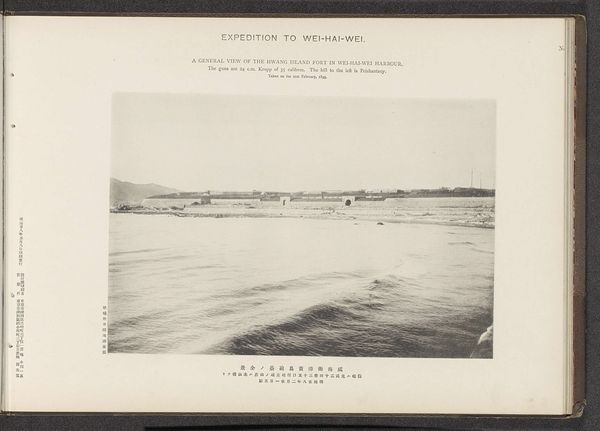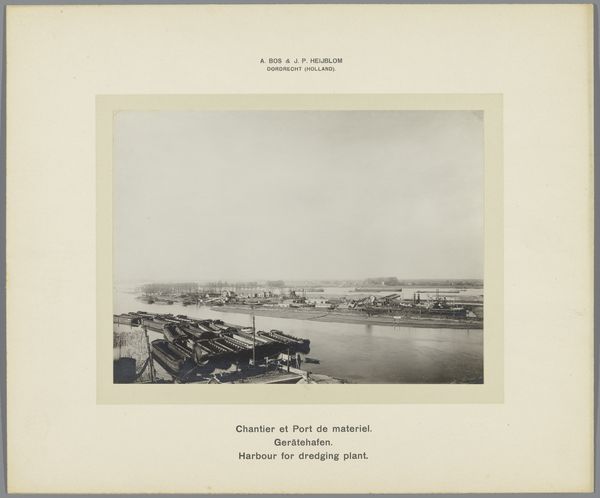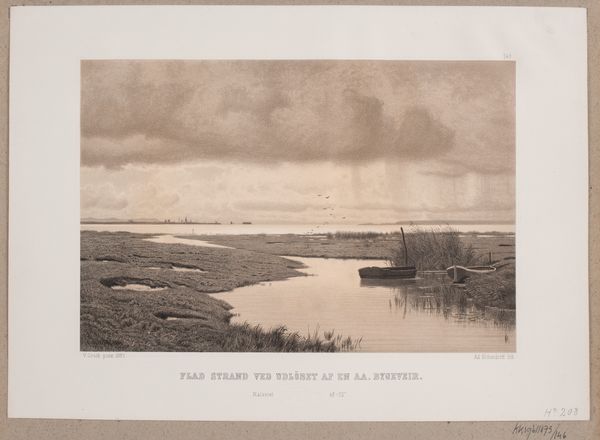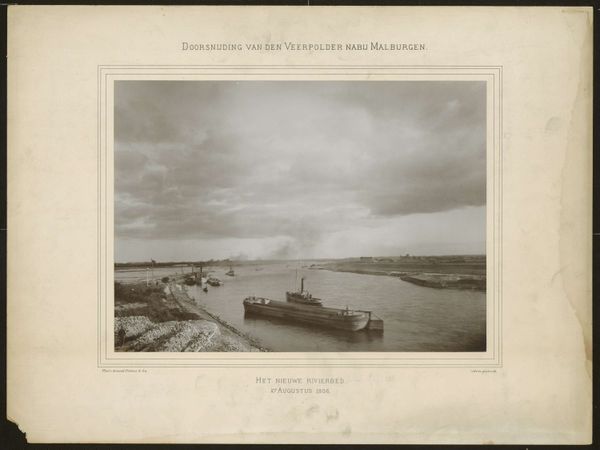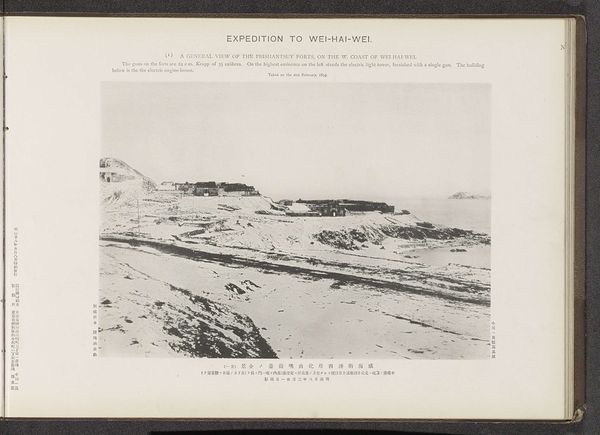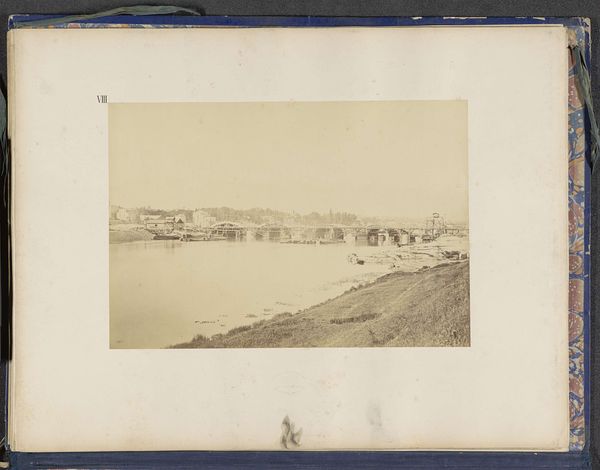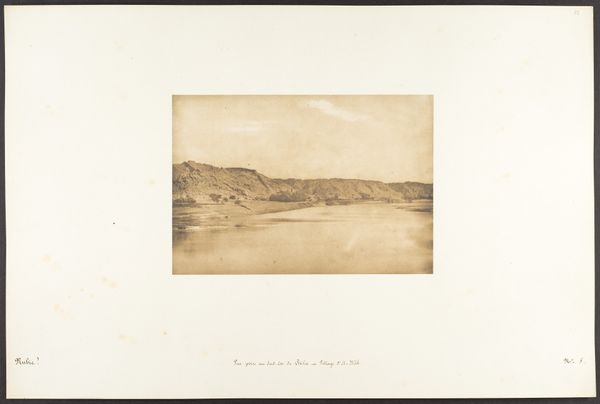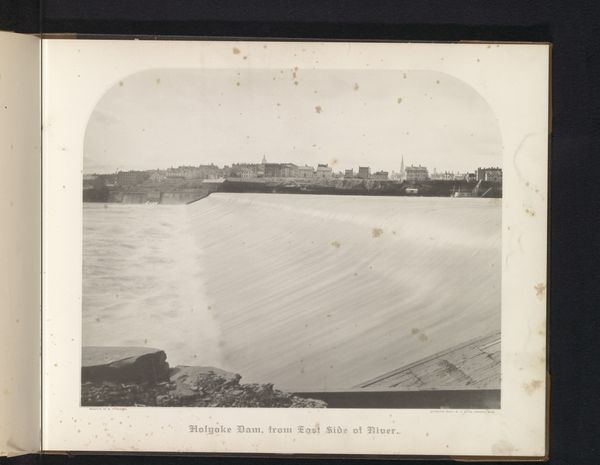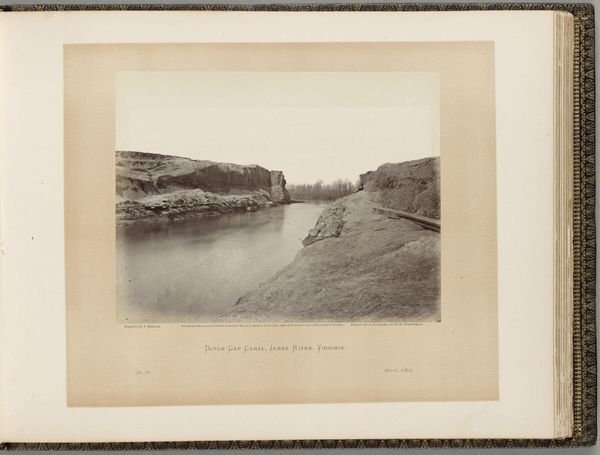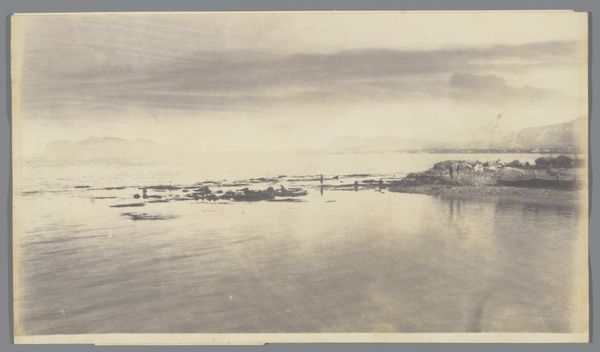
print, photography, albumen-print
#
muted colour palette
# print
#
landscape
#
photography
#
muted colour
#
watercolour illustration
#
albumen-print
#
realism
Dimensions: height 49.1 cm, width 66.7 cm
Copyright: Rijks Museum: Open Domain
Curator: Standing before us is "Doorsnijding van den Veerpolder nabij Malburgen," which translates to "Cross-section of the Veerpolder near Malburgen." This work, attributed to Arnaud Pistoor & Zoon, is thought to be from around 1906. We see an albumen print, capturing a landscape in what appears to be the Netherlands. Editor: It's wonderfully gloomy, isn't it? Like a sigh translated into a photograph. All those muted browns and grays, reflecting a weighty sky. It feels vast, but also constrained, as if holding its breath. Curator: The albumen print process itself contributes to that somber feel. Consider the labor involved: coating the paper with egg white, sensitizing it, exposing the negative… each step, a slow accumulation of human effort to fix this view in time. Note too, that photography at this time was frequently tied to industry, to mapping and resource extraction, Editor: It makes me think about time in layers. The time it took to craft this print, yes, but also the longer timescale of the land itself, shaped by water, by polders doing their diligent work. Is that a tiny figure in the corner? I almost missed them. They are dwarfed by everything, making you aware of the scale. Curator: That tiny figure speaks volumes about the human impact on the landscape. We see evidence of intervention—the man-made banks, the carefully managed waterways. This image highlights the constant negotiation between people and their environment, the transformation of nature into a resource and managed space. It shows the transformation as picturesque while actually facilitating massive changes in water movement. Editor: I feel drawn in. Maybe because, despite the stillness, it's all about flow – water finding its way, light shifting across the surface, the endless movement of weather over land. Plus, there's a melancholic beauty, something that I think calls us in, if only for a minute. Curator: I agree. Ultimately, the power of this piece lies not just in its aesthetic quality but in its documentarian aspects: how it invites us to contemplate the historical relationship between industry and landscape, even from a distant present. Editor: Well, next time I feel the urge to photograph the perfect grey sky, I'll try to remember this photo. The process, the time, all the factors at play to bring that quiet beauty into view. Thanks!
Comments
No comments
Be the first to comment and join the conversation on the ultimate creative platform.
